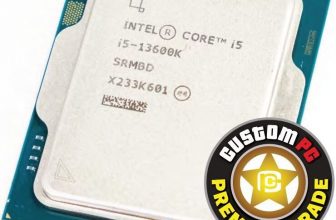AMD Ryzen 5 1500X Review

Can Ryzen maintain the magic with four cores?
More cores, more threads, and more performance for less money. That’s the killer proposition for AMD’s new Ryzen CPU. Suddenly, most of Intel’s desktop processor range looks overpriced and short on punch.
But does that thinking extend to this, the new Ryzen 5 1500X, with its mere four cores and eight threads? After all, Intel has plenty of mainstream quad-core chips to choose from. And as good as Ryzen undoubtedly is, Intel still has the edge on a per-core basis.
Initially, the 1500X looks competitive, if not quite the knock-out option of the six and eight-core models. It lines up roughly against the Intel Core i5- 7400. That’s a quad-core, quad-thread model, with a 3GHz base clock and 3.5GHz Turbo speed. Ryzen chips aren’t directly comparable in terms of clock speed, but with a 3.5GHz base clock and 3.7GHz turbo speed, the 1500X has a little extra in hand to offset Ryzen’s slight per-clock deficiency versus Intel’s finest. It’s also fully unlocked, theoretically allowing for even more frequency advantage where Intel keeps most of its chips locked down, bar the pricey K series models.
Of course, you could argue that if you’re going with Intel, you would be crazy not to grab the Core i5-7500 for just more, what with its 3.4GHz base clock and 3.8GHz Turbo speed. And as we’ll see, it’s just that kind of calculation that eventually undoes the 1500X. But that’s getting a little ahead of ourselves.
First, let’s have a sniff around the 1500X’s prowess in our performance benchmarks.
Like the other Ryzen chips we’ve sampled, multithreading is where it hits hardest. At over 800 points in Cinebench, it batters the much more expensive Intel Core i5-7600K, let alone those cheaper Core i5 models.
The 1500X is quicker than the 7600K in Fry Render, too, albeit by a pretty small margin, though it’s more or less a dead heat in x265 video encoding. In other words, it’ll absolutely beast those price-parity Core i5-7400 and 7500 processors in anything that’s multithreaded.
Beaten at its own game The exception, as ever, is gaming. Many titles tend to be GPU-limited at the detail and resolutions keen gamers are likely to be using. But where a game is CPU-limited, which is the case even at high resolutions in Total War: Attila, Intel chips still have the edge, though it’s worth noting that this quad-core Ryzen delivers precisely the same frame rate in Attila as the six-core 1600X. Over time, as game developers get their heads around the nuances of AMD’s new Zen architecture, the gap may well narrow. For now, though, gaming is Ryzen’s one obvious weakness, and it applies to the 1500X as much as any other mode.
Ryzen’s value proposition isn’t quite so killer in quad-core trim.
Gaming, however, really is the exception. Nearly everywhere else, Ryzen is damn quick. The 1500X also impressed, in relative terms, in our overclocking tests.
We managed a straightforward and stable 4.1GHz, or a 400MHz overclock. That’s not exactly spectacular, but it’s a useful 10 percent boost.
So the question you have to ask yourself is whether the saving over the six-core Ryzen 1600 and the saving versus the slightly faster 1600X is worth it. With the latter, you’re getting both 50 percent more cores and slightly faster clocks.
What’s more, with any Ryzen processor, you’re almost certainly going to need a new motherboard and RAM to go with it. That means a likely minimum investment in the region. In that context, an extra for a six-core model and a lot more performance is surely the better choice.
With all that in mind, it’s not the Intel alternative that pulls the rug out from under the 1500X, it’s the value proposition of those six-core models. A few years down the road, when some of us have existing systems with AMD’s new AM4 socket, the value calculation will look different. But for now, and considering the total cost of going with a new Ryzen rig, this particular 1500X chip is a hard sell.
[JereMy Laird]
Specifications
Base clock 3.5GHz
turbo clock 3.7GHz
cores 4
threads 8
lithography 14nm FinFET
cache 16MB
Memory Support DDR4 2400
Memory channels 2
Max Pcie lanes 16+4+4
tDP 65W
When you purchase through links on our site, I may earn an affiliate commission. Here’s how it works.









